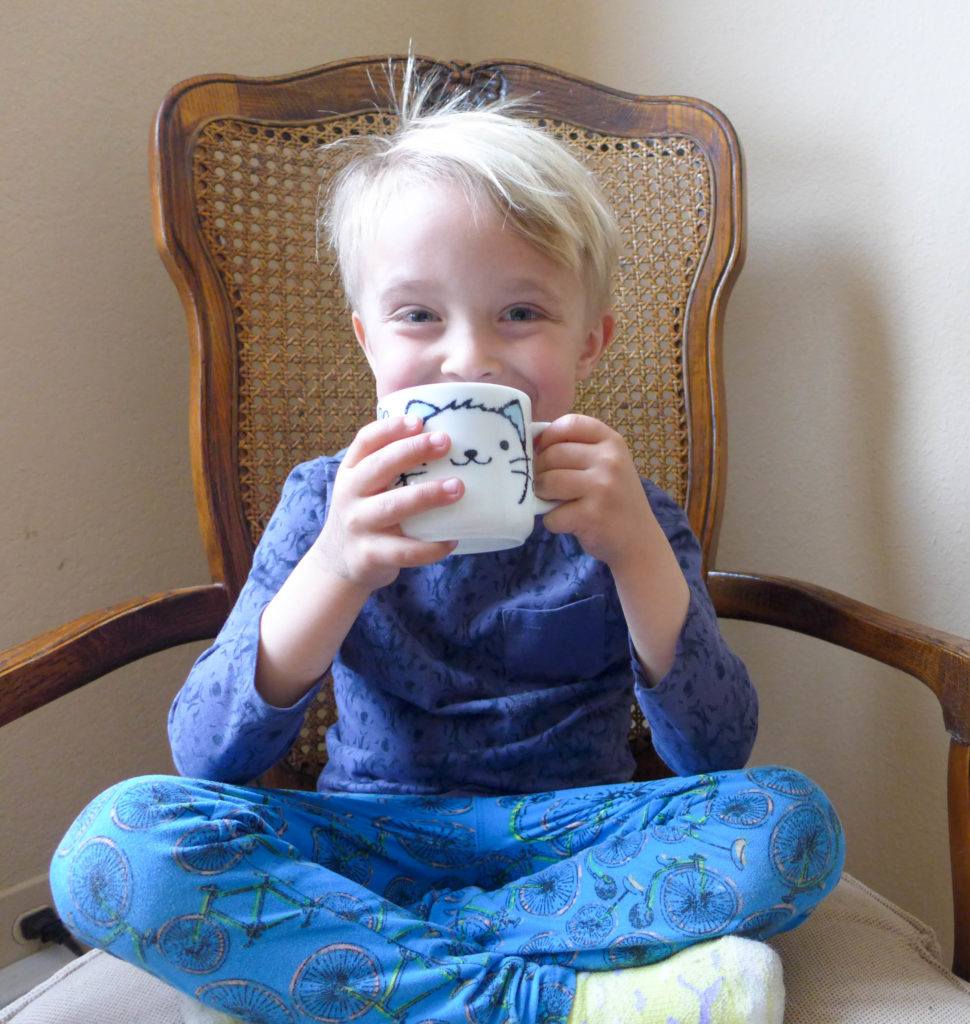
A couple of weeks ago during a string of snow days, we came up with the sweetest afternoon routine, and it centered around something we’re calling “Quiet as a Mouse Tea Time”. Continue reading


A couple of weeks ago during a string of snow days, we came up with the sweetest afternoon routine, and it centered around something we’re calling “Quiet as a Mouse Tea Time”. Continue reading
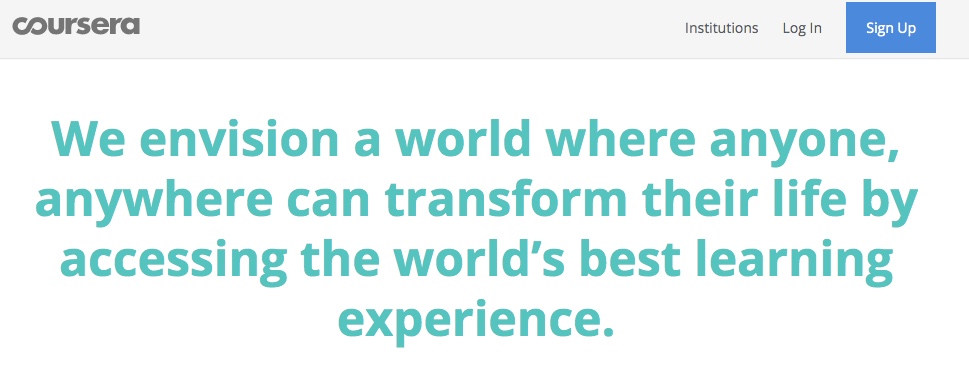
When I was an undergrad, my university had a vibrant life-long learning program. Do you know what I’m talking about? It was geared towards older individuals that wanted to take classes, but we’re in a degree program. Maybe they’d take a History of Jazz class one semester and then a paleontology class the next.
Every time I saw an life-long learning student/senior citizens on campus, I was JEALOUS. College was stressful, but I loved learning, and I would daydream about how much fun it would be to take classes without the heavy workload or the stress of grades.
Well, I just realized this summer, that my time has come! Continue reading
Gratitude improves our existence. There is no argument there. Gratitude helps us sleep better at night, cope during difficult times, and leads to better overall health. Practicing gratitude and writing in a gratitude journal each day is one way to ensure we reap the benefits of gratitude. If you already have a gratitude habit, adding a writing element will fit seamlessly into your routine. If you aren’t in the habit of expressing gratitude, let’s learn how to do so through journaling and what better time to begin than Thanksgiving, a holiday built upon gratitude. We’ll cover techniques that will both fit into the busiest of schedules and those with a little more time to devote to gratitude journaling.
Journaling our gratitude is another way to solidify the gratitude habit loop we are trying to employ. Remember, a habit has three parts: the cue, the routine, and the reward. The cue for gratitude journaling should be something that happens every single day. Maybe you always wake up and drink a cup of coffee. You could use the coffee brewing aroma as your cue to open your gratitude journal and begin your day’s entry. The routine is the act of your journaling, which we will talk about a bit more, and the reward can be enjoying a freshly brewed cup of coffee or the feeling that washes over you after you internalize what it means to be grateful, even for the little things in this life. So long as you clearly define your cue, remember to employ your routine, and follow up with a reward, eventually your habit loop will begin to emerge on its own.
Let’s circle back to our routine: journaling. Journaling doesn’t imply that you need to sit down with a pen and a notebook every night and scrawl for hours, unloading everything that happened in your mind and in reality that day. There are many ways to journal and certainly a technique that can work for everyone, even the busiest among us. If you aren’t keen on the idea of journaling or you don’t think you have enough time, start by bullet journaling. Simply jot down a few bullet points of gratitude each day. It’s as simple as that. If you’re really pressed for time you could write down three words, that’s it, just three words! That alone would constitute as a gratitude journal and a gratitude habit so long as you are consistent and add an entry each day.
If you are intrigued by the idea of a gratitude journal and would like to make it an enjoyable piece of each day, you can choose a pretty journal, pick out a cozy seat, and set the mood for journaling. Light a candle, pour a glass of wine or brew a cup of tea. Play a favorite song. Even if you only plan to write a few sentences about each grateful moment of your day, setting the vibe for your routine acts as part of the cue. Soon enough, you will look forward to the moment in your day when you put on your slippers, curl up on the couch, and pull out your journal. It’s more than just the act of writing, it’s about the mood it evokes. In this case, setting the vibe of your journaling session is also partly acting as a reward.
When you consciously choose to craft special moments in your day, you will soon begin to crave those cues and then act on them. You will look forward to the reward of feeling grateful and blessed in your life. Starting a gratitude journal doesn’t have to take time out of your day if you don’t want it to. It can be as simple as a note in your phone where you type out a few points of gratitude each day. It can also be a new part of your daily routine that does take time, time for you to enjoy the present moment and soak in the goodness of your day. The choice is yours, but either way, you will be improving your overall existence by solidifying a gratitude habit.
Last month, we had a bit of a friend-raising theme going. Katie shared how she started a Facebook group geared toward getting kids outside. She also did a feature on the freakin’ awesome cookbook club she is a part of. I was fortunate enough to attend two of those events and I can only aspire to be a part of that community. I also gave you the 411 on starting your very own Meetup group. Today I’m back with a post that’s maaaybe a couple of weeks late if I wanted it to fit into that monthly theme, but WTF how is it April already?
As someone who has moved to a new city a few times since graduating from college, I know that making friends as an adult is super hard. Like really tough. There’s no longer access to a pool of people with similar interests like when we were on sports teams or going to school. I feel like adults usually meet friends at work or through a partner or the parents of your kids’ friends, but guess what? I had none of that! I’ve been self-employed since college, kidless, and long-distance dating. That being said, I’ve had to make friends on my own time and I’ve been so fortunate to meet awesome people, but it all came with some legwork.
I geared this post towards meeting friends of a certain type, because a while back one of my girlfriends asked me how she could meet more people like me. More people that were chill AF instead of anxious and stressed. More friends that had a mindfulness tilt. Know that you can take the advice below and alter it to whatever activity you are into. Each time you see the word mindful simply change it to the activity or trait you’re looking for whether it’s mountain biking, oil painting, or marathon running, this post should help you make more friends 
Ways to Meet Mindful Friends:
Join a Meetup group that focuses on meditation – There are dozens of groups in every major city that focus on meditation and mindfulness. Even if you are from a small town, with a quick google search, you can find a group that meets weekly or monthly. Join the group. Attend the meetings and begin to network. Once you feel comfortable in the group setting, you’ll start to make connections with other mindful people. If you sense a friendship blossoming, don’t be afraid to ask that person out on a friend date without the meditation group.
Go to a yoga class – Yoga and mindfulness go hand in hand. While a yoga class in itself is a solitary act, before and after class is a great time to connect. Arrive to class early and insert yourself into the group chatter. You never know, your new best bud may be in attendance. If you are not comfortable at one yoga studio, don’t let that deter you. There are many kinds of yoga and yoga studios, and there is indeed one that is right for you.
Seek out events that mindful people would attend – Mindfulness and meditation is probably not your only interest, and this is true for your future friend. Start perusing your town’s monthly calendar and highlight a few events that interest you. Look for activities focused on cultivating awareness whether it’s for the earth, the community itself, or a particular hobby. Community events draw a wonderful mix of people with similar interests and are a great first step in making new friends.
Find a yoga or meditation festival or retreat near you – Festivals are a great sphere to make friends. Many in attendance look forward to the event for months and are amped to smile and chat with new people. Sign up as an attendee or even a volunteer. While at the festival, try to seek out opportunities to interact in smaller groups as well. Maybe there is a workshop or class you can attend. These smaller groups give people the chance to connect on a deeper level. If you really want to make friends, attend a retreat. These small groups encourage attendees to really connect and many people stay in contact long after the retreat is over. I’m hosting a retreat in June in North Carolina if you are serious about this friend-finding mission!
Look for online forums conversing meditation and mindfulness – It seems we spend a lot of time connecting online these days. While we don’t want your mindfulness friendship to exist solely online, this is an excellent place to start. Google, Reddit, and Meetup act as good search engines and starter forums to find events and people to connect with who have a common interest.
Attend a mindfulness book reading or author signing – Keep your eye out for book readings and author signings near you. Pay specific attention to books that deal with mindfulness and meditation. Arrive early and don’t be afraid to strike up a conversation with other attendees. If you have a chance to chat with the author afterward or during the Q&A session, go ahead and ask where he or she has met mindfulness friends in the past. This could open a door for you with other attendees who are also looking for a mindful community.
You may feel alone sometimes, but we all do. Know that other mindful folks are looking for a friend too. Start your friend-finding journey by attending mindfulness events and inserting yourself into spaces where you know meditative people will be hanging out.
Since the start of the year, we’ve been focusing on monthly initiatives. A theme that sets the stage for some of the posts we’ll be sharing throughout the month. In January, we focused on good habits. During February we kept those good habits going with a particular focus on taking care of our mental health. This month, we mentioned in the Monthly Welcome that we want to put the focus on relationships, and in particular, to something called “friendraising” like fundraising, but with friends, ya dig it?
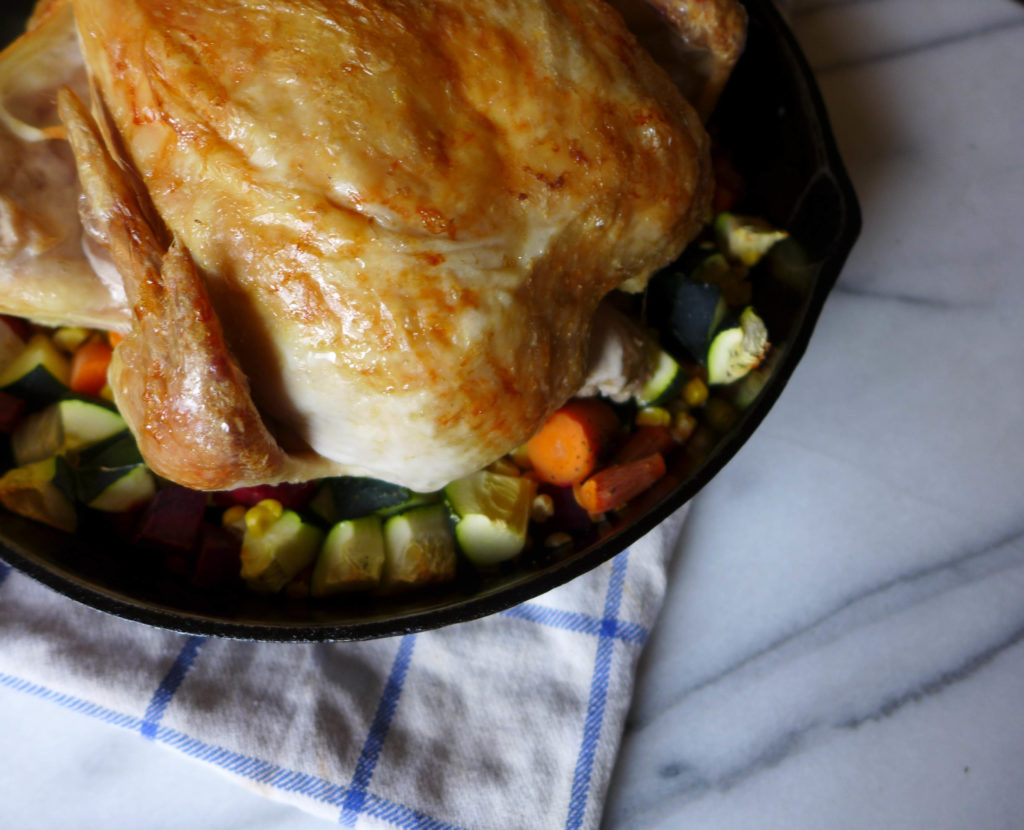
The communities we love to insert ourselves into are usually built around shared interests: cooking, hiking, parents, etc. Normally we find out about these groups through friends, community calendars, our city’s free weekly paper, or the internet, and sometimes we start our own groups.
Sarah began this series by discussing how and why to start a meetup group, and I followed up with a discussion about starting a Facebook group. While those ideas may sound like on in the same, they actually served different purposes. Sarah’s group was used to primarily promote events that she was hosting, while my group was a forum for sharing events hosted by other area groups… and in those posts we explain why one forum may be better than the other for certain purposes.
Today I’m talking about a special kind of book club : a cookbook club! I’ve taken part in a cookbook club for a few years now, and it’s been a really great experience. Here’s what we do…

A cookbook club is a potluck gathering where everyone attending prepares recipes from the same cookbook.
Our group meets approximately every two months. We rotate hosting duties. The host gets to pick the book and provides drinks. Sometimes the drinks compliment the book’s cuisine, other times it’s just wine and sparkling water.
Our group has a no-kids policy (little babies are obviously allowed). This makes for a more relaxing potluck, where you can enjoy the food and have a bit of conversation. About once/year there’s been a family-friendly event, but in general, it’s adults only.
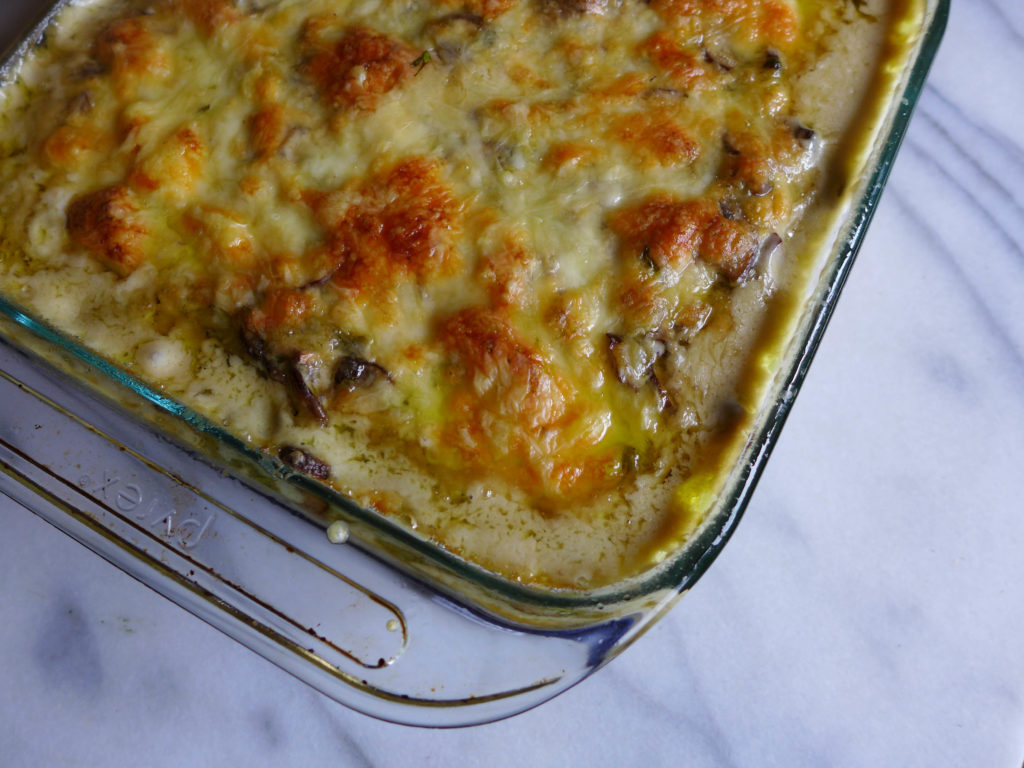
This article was the inspiration for our club, and really I couldn’t sum it up any better than that. Cookbook clubs bring a group of friends to share a delicious meal. From one potluck to the next, you get to go on whichever culinary adventure you want, from Thai to Italian to Middle Eastern to dishes from the American South. The potluck is the celebration of this communal experience.
Our potlucks start by everyone introducing themselves and the dish they brought. If you’re not careful, these introductions can drag out as guests go off on funny or painful tangents about what it took to put their dish together. Oftentimes, it’s no trouble at all, but other times there can be the adventure of finding the right ingredients or the tale of how a dish had to be made and re-made to get it just right.
After introductions, plates are passed, food is served, and everyone relaxes into conversation and a good meal. And really, every time, the meals are delicious!
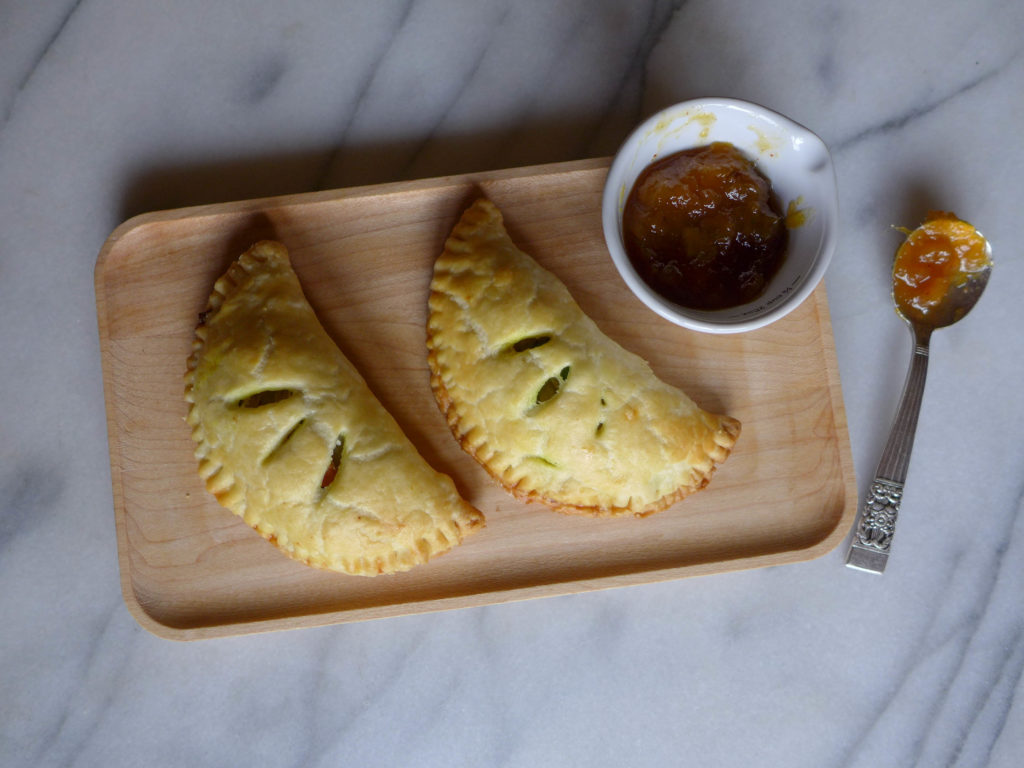
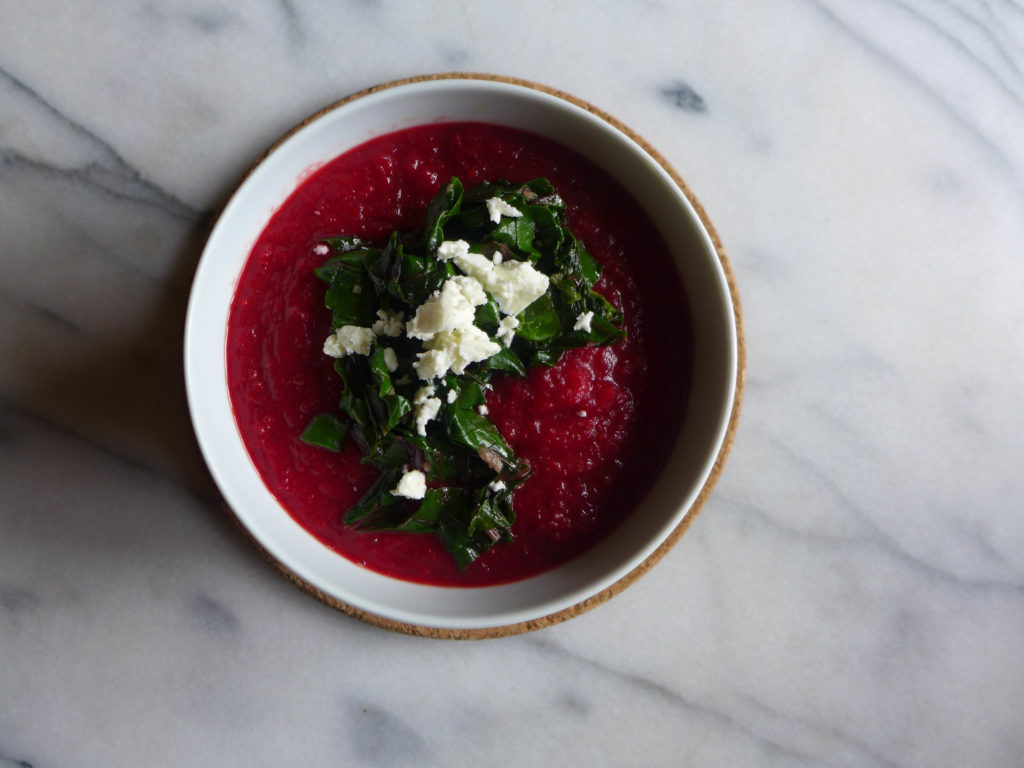
If you’re thinking about starting a cookbook club, it’s likely that you’ll also offer to be the first to host. Pick a time, date, and book.
Send out invites to your friends, and encourage them to invite others that may be interested. We’ve found 8-12 guests to be a great number, but you may have to work up to that as you slowly get the word out, don’t be deterred.
On the day of, there’s the usual straightening up of the house. Then do a few things to prepare for hosting a potluck. Prepare your table for the food, including trivets for hot dishes. Put out a pile of plates,silverware, napkins, and extra serving utensils. Prepare a drink station with the beverages, ice, and glasses. Put out hotpads and make your oven and stove available for any guests that may have to keep a dish warm. Make it easy for guests to help themselves so that you can focus on welcoming everyone and taking care of any last minute details.
As the guests arrive, start serving drinks. Once all of the dishes are on the table, start the introductions. Start with a short welcome, introduce yourself and your dish, and then go around the table having each guest do the same.
After introductions, let the guests help themselves to the food.
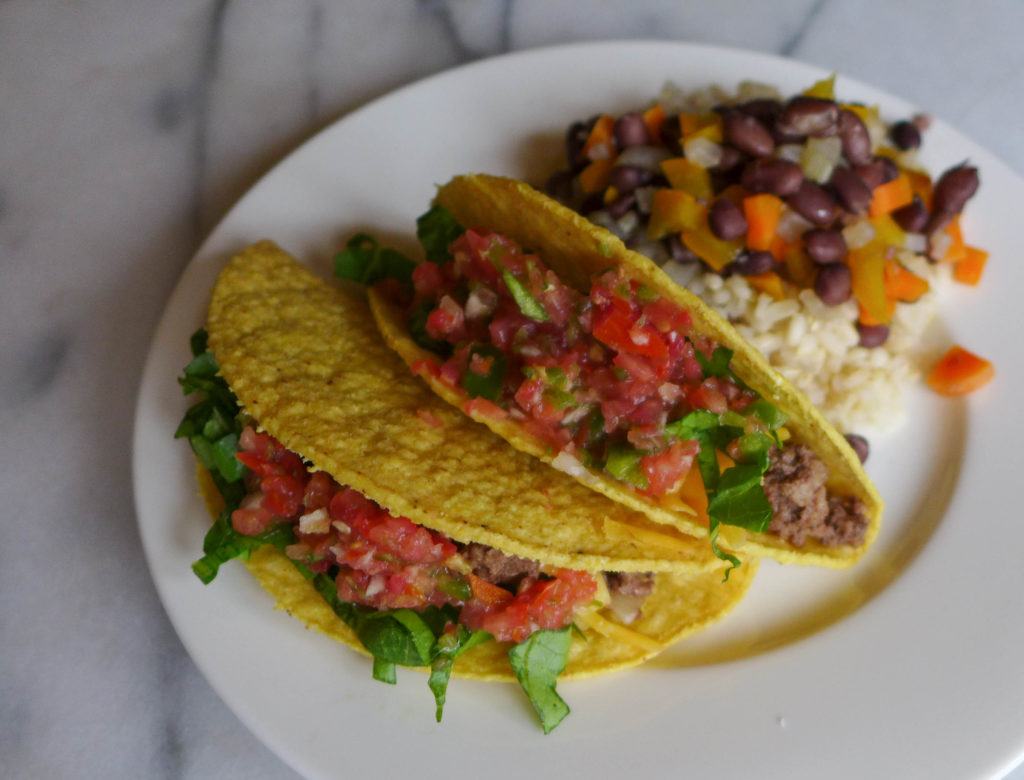
When the group I’m in started, it was small enough that all communication could be done by email. But after a while, that got a bit cumbersome, especially if a conversation got started and you were 20 emails behind. Eventually we moved to Google Groups, but for one reason or another, that was also hard for some members to navigate. Now we use a private Facebook group for communication.
Facebook works well for our purposes. We can use the poll option to pick dates, and sometimes hosts have used polls to help decide which cookbook to use. Once you have a date, it’s easy to create an “event” within the group where you can put pertinent details for that particular potluck.
To keep track of who is bringing which dish from the book, we use a Google spreadsheet, and keep it “pinned” to the top of the Facebook group’s feed. In that document, we have a different sheet for each potluck. Anyone attending includes their name, the dish they plan on making, and what category of food it is (main, side, dessert, vegetarian, etc.). This helps the host with knowing how many people to expect, and makes it easy for all guests to help round-out the variety of dishes. We’ve never had a problem with having an unbalanced meal; usually there’s a nice ratio of mains to sides plus a few desserts.
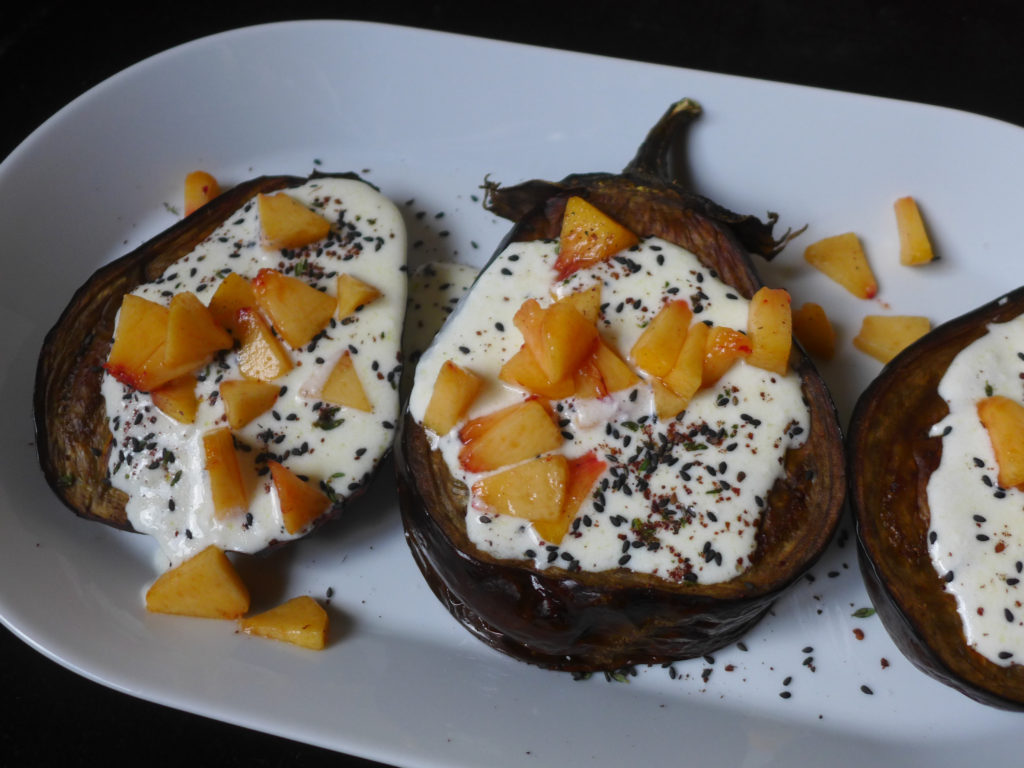
Sometimes the hardest aspect of this club is picking out the next book! I like to follow a few food-related blogs in an effort to keep on top of what’s coming out when looking for new releases.
When picking a book, be aware that not everyone in the club may want to buy it. It’s nice if the book is available in your local library or if enough members have the book so that you can pass it around before the event. Another thing we sometimes do is pick a book by a food writer who also has a blog, then allow people in the group to choose recipes from the book or the blog.
Below are a few suggestions for books, and I include a note when the author also has a blog. If you have any books that you would add to our list, please let me know!
*The photos throughout this post came from my Farm Share series, where you can find loads of meal inspiration!
You are what you eat, which is why you would pick up a firm, crisp apple, but a bruised, rotted one, no way. Translate that to thought. Why do we continue to consume negative, fearful, anxious thoughts, when positive, uplifting, and gracious ones also exist?
It’s not entirely your fault. Our brains have a natural bias to shade our implicit memories in a negative light even though for the most part our experiences are actually positive. You can think of implicit memories like the residue of past experiences. Implicit memories remain primarily below the surface of awareness yet they shape the inner atmosphere of the mind. Our brain is actually trying to protect us by constantly scanning, registering, storing, recalling, and reacting to unpleasantness, but because of this we unknowingly internalize those memories instead of the positive, carefree, and overall safe experiences that we also have each day.
How do you color your memories with positivity? Your brain is acting as it always has, therefore to interrupt its daily exercise, you need to be mindful of internalizing positive explicit memories, memories that are entirely conscious recollections of specific events. These are the memories you have a bit of control over. To actively shape the brain, you need to solidify these positive experiences, by seeking them out, savoring them, and allowing them to sink in.
Look for the good news that surrounds you, find the joy in each moment, allow yourself to see the bright side of a dark day. We sometimes struggle with this physical exercise, so allow yourself to acknowledge how tough it may be to find the positive. It’s okay if it’s a struggle but persist. You are actively changing your neural structure. Pain today breeds more pain for tomorrow, the converse is also true.
Once you find the positive, focus on it for at least ten seconds. Allow it to sink in. Feel the residual sparks of happiness coursing through your physical body. Really allow yourself to feel content. Try to locate and identify that feeling and sensation in your body. The longer something is held in your awareness, the more emotionally stimulating it is, the more neurons will be firing, and the stronger the trace (implicit) memory will be. Focusing on this momentary contentment increases dopamine release, which encourages your mind to stay focused on this experience allowing for more positive neural associations in your implicit memories.
Now that you have a handle on internalizing positive experiences, you can use them to balance out your negative ones. When experiences are lumped together in your memory, they take with them whatever else is in awareness or on your mind, especially if dealing with intense emotion. This means you can actively infuse positive material with negative material in order to cultivate a neutral or positive implicit bias in your mind. Think about the comforting feeling of being nurtured by a friend when you’re experiencing profound loss. You friend isn’t taking away the pain, but their soothing presence helps to balance out the grief you are experiencing. Now you will see how to use your positive memories to soothe your negative ones.
Basically, you want to intently focus on a positive experience while the painful experience is sensed dimly in the background. When negative material rises, bring to mind emotions and perspectives that work as its antidote. Whenever you have a positive experience, allow it to sink in, soothe, and replace old pains.
Maybe you had a really fantastic dinner with your parents. Allow yourself to be fully immersed in the experience. Listen to the conversation, inhale deeply and smell the fresh flowers in the center of the table, close your eyes and really taste your meal, allow yourself to preserve the positive emotions you are feeling. After dinner, recall a negative memory of a family dinner, while still allowing yourself to feel the warmth, happiness, and contentment from the positive experience. Allow your positive memory to begin to flush out the negative memory.
When your brain recalls a memory, it draws on key features, not specific events, it fills in details with simulation, and it does it so quickly that you don’t even notice it. This rebuilding process is what gives you the opportunity to color your memories with positivity. When a memory is activated, a large-scale assembly of neurons and synapse unfold into a pattern. If other things are also being held in your mind, in this case, positive memories, your amygdala, and hippocampus (regulators of emotions and memory) will automatically associate them with the neural array and when you stop recalling the memory, it will be lumped in with those other associations, in this case, the positive family dinner.
Coloring memories with positivity takes time and effort. Repetition is required. Be mindful of the deep roots of reoccurring pain and upset within you. Try to identify the tip of these roots, maybe planted during childhood or a particular relationship or traumatic event. Deliberately propel your positive experiences towards these roots to displace them. Fill that space with positive emotion. Know that this exercise can also work in the opposite direction so if you find yourself dwelling on negative feelings, you may not be ready for this exercise.
Each time you work on taking in the good or positive, you flex your brain muscles. You build up a little bit of neural structure and encourage your brain to continue seeking out contentment. Coloring your memories with positivity a few times each day for months will turn into years, and will gradually change your mind and the way it operates, therefore affecting how you feel and act, in far reaching ways.
Taking in the good is good. You are building up positive emotions that will benefit your overall physical and mental health. The point is not to ignore painful experiences or grasp after positive ones but to internalize the good and work on accepting the difficult while comforting yourself with soothing thoughts and feelings. Not only will you shift the way your brain works, but you will also be a grounding and positive force for those around you. Anxious and overwhelmed people will seek refuge near you as you’ll be a source for comfort instead of added anxiety.
and now I’ve started off 2019 by ALMOST finishing a sweater for Luc before realizing that the sleeves were two different circumferences. So, yesterday marks the first time that I’ve had to rip out most of a sweater to fix a counting error, but tomorrow I’ll push on and knit like crazy to get back on track.
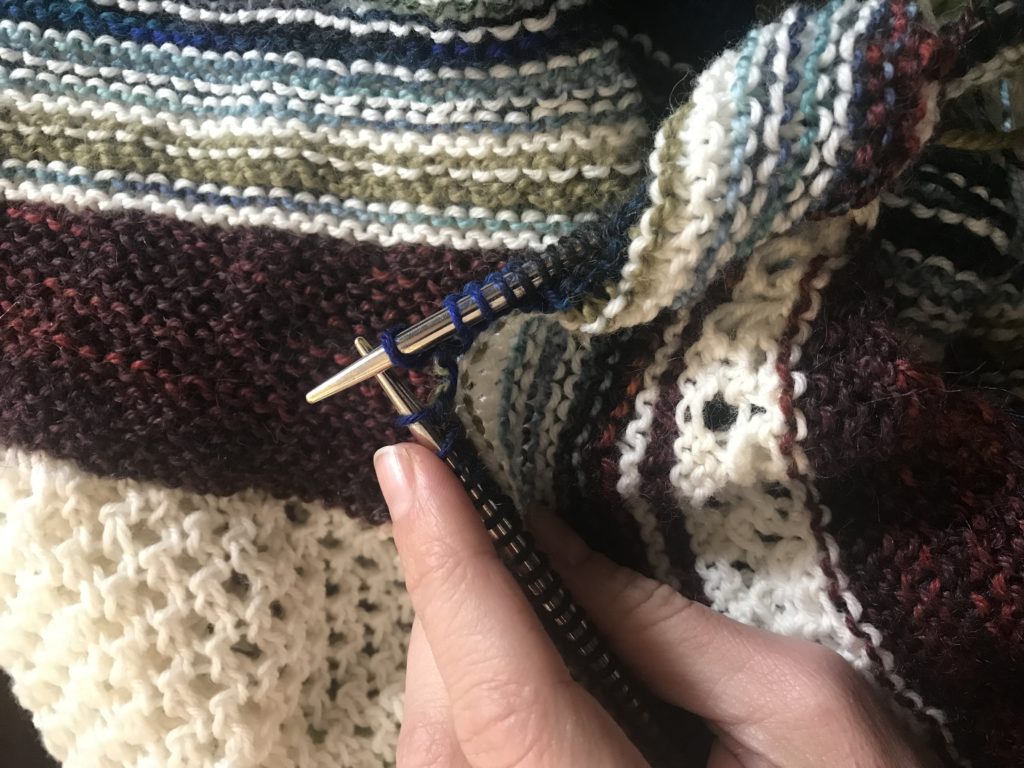
Sarah wrote a post asking you to read with her more in 2018. I jumped on that train and shared the amazingly simple change I made that had me reading much more in 2018. I’m so happy that I kept up my bedtime reading habit, and I still love the change a year later!
If you joined us in Welcoming February yesterday, then you know we’re focusing on appreciating ourselves this month. One way to accomplish that is to extend yourself to your loved ones, to share the love, brighten someone’s day, and in turn feel brighter yourself.
A couple of years ago, I started a group chat called ‘Girl Talk’ where five friends and I basically bitch and moan to each other each week. We find ourselves coming to the chat to air our grievances against our co-workers, partners, and life in general. It’s a nice safe space where we can complain without consequence. Most of the stuff that we share is not a huge deal and it definitely is not worth complaining to our significant others about or confronting that shitty boss; sharing it in Girl Talk is enough of a resolution.
Since the start of this chat group, I realized that we are all dealing with a little bit of bullsh!t on a weekly basis. We all need care, love, nurturing, and support to make our way through it. What do you do when you need to cheer up your friends, but you are far away? Below are a few suggestions: Continue reading
Holy crap guys, I guess I haven’t shared resolutions since 2015! See them here. Katie has been more diligent, here are her 2016 and 2017 resolution posts and here are her 2019 resolutions. Inspiring, yeah?
Here’s a look back at 2018 – These were the main things I had hoped to accomplish, some went better than others. Continue reading
There is good news for the grumpy among us. An attitude of gratitude can be learned. One way to inject your existence with more gratitude is to intentionally create a habit surrounding it. Habit creation can be broken down into a couple of simple steps and integrated into one’s daily life. Begin creating a gratitude habit today that becomes automatic tomorrow. Okay, maybe not tomorrow, but by Thanksgiving, I bet you’ll be thankful for how thankful you are.